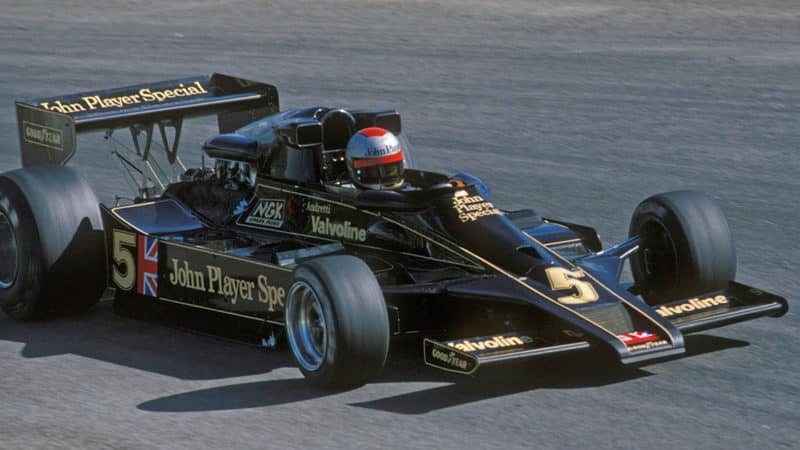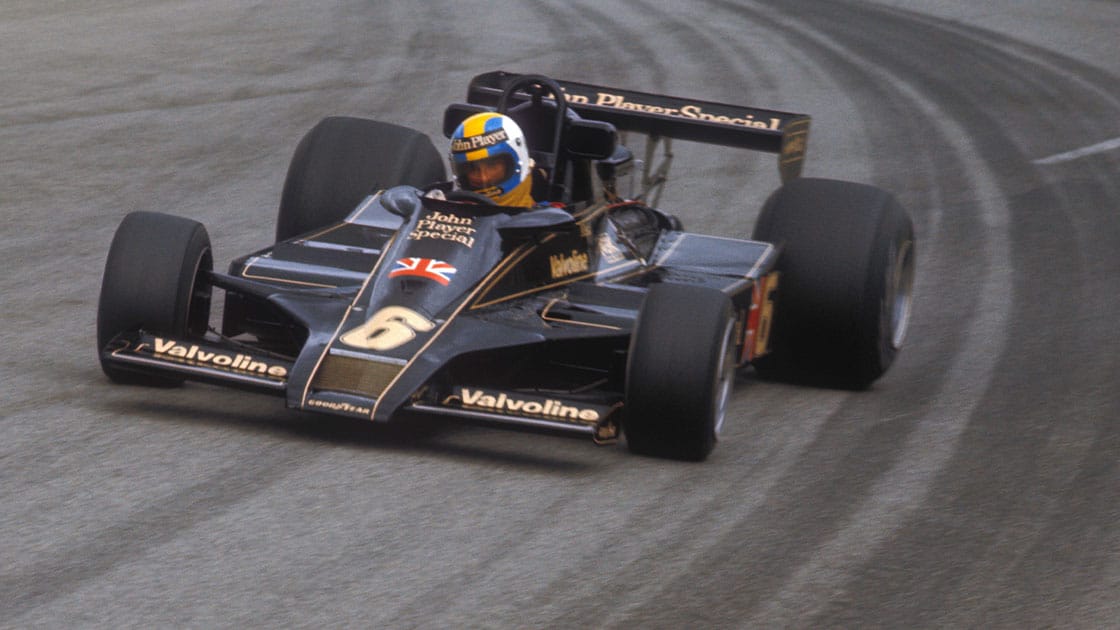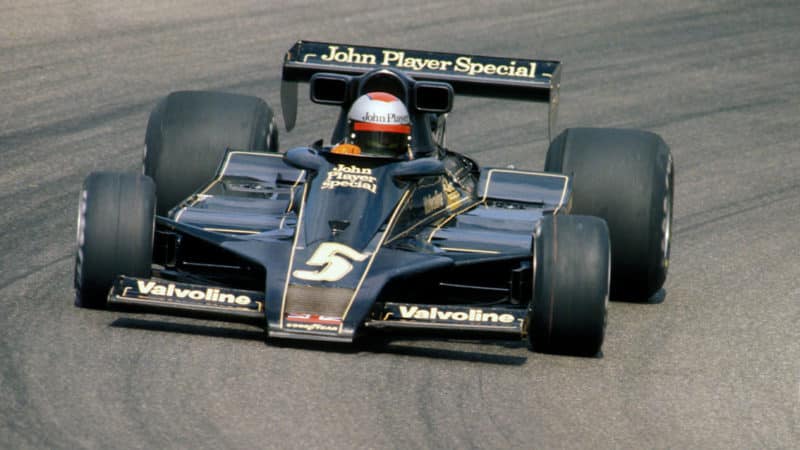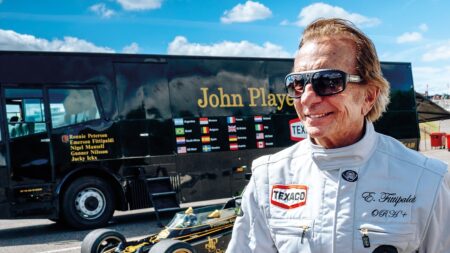Another first on the later 78 variant, the JPS 16, was carrying the engine oil in the bell-housing. That was facilitated by using a co-axial clutch throw-out slave cylinder, an idea which Bellamy first experienced at Brabham. It fits inside a sleeve through the centre of the oil tank. I first did it on a Hewland DG300 gearbox about 1968-69 when Ralph was working for me. I dropped it the next year because they brought out the DG400 and I was in too much of a hurry to carry it on. But Ralph picked it up. The big advantage is that it allows the packaging to be smaller. If the oil tank is in front of the engine it adds 3-4in to the length, and by then they’d banned having it on the gearbox, behind the rear axle. It had to be within a certain distance of the centreline, but it wouldn’t fit in the side-wings, so the bell-housing idea was a good one. Nowadays it’s back in front of the engine in a scallop in the tub, which is easy to do with a composite monocoque; with flat panels it was harder.
Not everything was new on the 78: the rear end was almost the same as the 77, but with a widerbased bottom wishbone; also the track was brought up to the legal maximum to allow for the widest sidepod and thus the maximum ground effect. The front springs were inboard of course, for best airflow under the sidepods. It also had twin calipers, something Bait did on the Theodore; that puts heat into both sides of the disc so that it heats more uniformly very important when we had iron discs. Chapman’s rivals didn’t really wake up to what his Lotus 78 was doing for the simple reason that it wasn’t too efficient aerodynamically; the brush side-skirts didn’t do a particularly good job; they needed the sliding skirts of the 79. Also, Lotus had good drivers at the time; Mario Andretti and Gunnar Nilsson in the first year, then Andretti and Ronnie Peterson, so it was the drivers who got the credit. From the 79 on everyone was scrambling for ground effect.

Andretti and Nilsson initially got more credit for performance of 78, says Tauranac
The first one I did was the F2 Raft for Toleman in 1979; we used a disastrous sliding skirt made of plastic sheet which would suck under and jam and make the handling inconsistent; it was only when the team introduced a honeycomb skirt with ceramic on the bottom edge that it worked.
Chapman had a reason for wanting publicity for his innovation, because of the road cars, whereas other teams didn’t really want to draw attention to what they’d done they just wanted the advantage without it being obvious where it came from. Of course, the trouble with being inventive is that others can do the Mk2 version without having wasted time on the Mk1. And that’s exactly what Williams did, building a better Lotus 79 in 1979 with their FW07.



